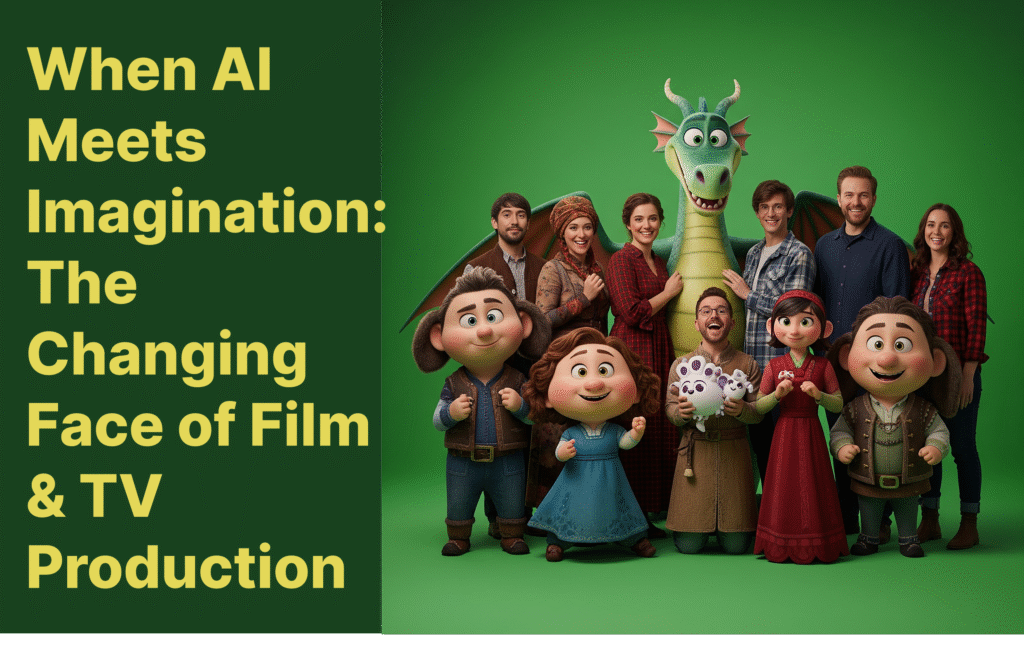The Micro-Series Supply-Chain Explained!
~ Atul Phadnis, CEO, Vitrina AI
The following is a summary of a report prepared for a closed-door briefing for premium members at Vitrina, including executives from Warner Bros. Discovery, ITV Studios, Disney, Sony Pictures, and other leading production companies and independent studios.
The Rise of Micro-Series: A New Content Economy
As we at Vitrina have been deconstructing the entertainment landscape for our members, one topic has become impossible to ignore: the Micro-Series supply chain. When we present this to industry leaders from places like Warner Bros. Discovery, ITV Studios, and Disney, it’s clear this is a very, very different ecosystem from the traditional film and TV supply chain we’re all used to. It’s a multi-billion dollar market built on low-cost, serialized content produced at a breakneck speed from start to finish.
Folks on the traditional side have even coined a term for it: “drama slop”. And you can see why—it’s low cost, you don’t recognize the actors, and the themes can be a bit edgy, focusing on fantasy and romance. But here’s the thing: it’s cheap to make, and it makes a lot of money.

The Habit-Forming Hook: From Comic Strips to Micro-Dramas
The narrative engine here is fascinating. Every single one-to-three-minute episode has to end on a cliffhanger. You know, it reminds me of when I was growing up with the newspapers. You’d read those comic strips—Superman, The Phantom—and the final frame was always a cliffhanger, designed to make sure you’d go back to the newspaper the next day to advance the story. It’s the same principle of habit formation.
This is a key evolution from what we’ve seen on platforms like YouTube. We all saw that snacky content works great—the best scenes from movies or sitcoms perform incredibly well. But the problem is that it’s not habit-forming. You see a clip, and it’s gone. These players have figured out how to turn a “snacky habit into a staple”. They use short, provocative episodes that get people hooked so it’s not just one video and done; you want them coming back.
Monetization: A Fascinating Fusion of Gaming and Media
When we started unpacking the monetization, it was absolutely fascinating for us as well. The whole model is heavily influenced by the mobile gaming industry. They use what you’d call an “aggressive freemium” engine. They let you watch the first 10 or 15% of a series for free to get you completely hooked.
Then, they introduce a paywall. The content is tokenized—every token unlocks an episode. And you have two ways to get them: the tokens can be bought with real money, driving microtransactions, or you can watch ads to earn them. And the numbers are just insane. We’ve seen the top apps gross a combined $3 million in a single day.
Just look at ReelShort, which has become the iconic North Star in this category. They registered an estimated $40 million in revenue for the month of July alone. They’re on a run rate to hit half a billion dollars this year. If that’s not a compelling figure for the traditional streamers, I don’t know what is.
Deconstructing the Supply Chain: Where Data is the Director
What’s really exciting for us to analyze as a supply-chain company is how differently each of these players is structured. The entire process is built for speed. Development isn’t months or years; it’s days to weeks. The concept-to-release timeline can be as short as four weeks. Production for a full season is often just 10 to 14 days of grueling 12-hour shifts. This is possible because they use non-unionized labor and unknown actors, keeping budgets under $300K, with some as low as $50K.
But the most revolutionary part is the feedback loop. Because these companies run on their own standalone apps, they have a closed-loop, data-driven system. They have total visibility into performance, tracking where viewers drop off or what triggers them to buy tokens. In this model, the director is actually the data.
We see this perfected with ReelShort’s parent company, Crazy Maple Studio. They’ve built an end-to-end IP engine. They use other apps they own, like the interactive story platform Chapters and the serialized fiction app My Fiction, to test themes and plots. When a story works there, it can become a micro-series. And it goes the other way, too: successful micro-series are being reverse-engineered back into novels, creating this incredible IP flywheel and a dedicated fan base.
This is clearly the emergence of a new category altogether. It’s not competing with your main TV for full-length content, but it has found an incredibly effective way to monetize the vertical screen, creating a powerful new force in the entertainment ecosystem.
Why This Matters for Studios, Streamers, and Service Providers
This isn’t just some quirky trend out of TikTok-land. The micro-series boom is reshaping the economics of content—and everyone in the supply chain needs to pay attention.
For studios and streamers, it’s a whole new playbook. Content that costs less than a single episode of a drama series is building massive, loyal audiences—and in some cases, minting IP that can travel across formats. If you think this is “too small to matter,” remember that every billion-dollar category in media looked fringe before it didn’t.
For vendors and service providers, this is a brand-new set of signals. These platforms don’t want prestige, they want speed. They don’t need 18 months of pre-production, they need 18 days. Whoever figures out how to plug into that demand—whether it’s fast-turnaround post, dubbing, or localization—is going to ride the wave.
And for acquirers and distributors, this is snackable IP that can scale globally. Asia, LATAM, Africa—all mobile-first regions—are natural growth markets for these series. And the crazy part? Some of this content is already being reverse-engineered into novels, podcasts, even long-form series. That’s an IP flywheel in motion.
Bottom line: this isn’t niche or another quirky trend anymore. It’s the early formation of a new supply chain and this phenomenon has consumer adoption and makes a lot of money [Streamers: please take note!]. The question is—do you want to observe it, or participate in it?
We’ll be unpacking this topic further in our upcoming webinar, featuring case studies, platforms, and the key players shaping the entertainment supply-chain.
If you’re curious about how this supply chain is evolving, register here to join the session. Seats for non-members of Vitrina are limited.










